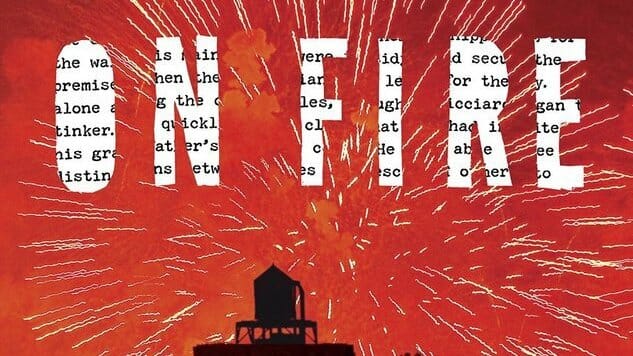City on Fire by Garth Risk Hallberg

Though Garth Risk Hallberg is the author of one experimental novella, “Field Guide to the North American Family,” he has written a great American novel on his first attempt. His undertaking is huge, his delivery is excellent, but the question of Hallberg’s first novel was controversial before anyone opened a cover.
 Hallberg, 36 years old and raised in the Carolinas by a father who is also a novelist, was given a seven-figure advance for City on Fire. The literary debate started almost immediately: Will it raise the value of first novels for other writers? Will a non-literary audience pick it up? And if it doesn’t recoup sales, won’t the industry as a whole be plagued? And, maybe the question that was hinted at beneath it all, why didn’t MY first novel get that kind of dough?
Hallberg, 36 years old and raised in the Carolinas by a father who is also a novelist, was given a seven-figure advance for City on Fire. The literary debate started almost immediately: Will it raise the value of first novels for other writers? Will a non-literary audience pick it up? And if it doesn’t recoup sales, won’t the industry as a whole be plagued? And, maybe the question that was hinted at beneath it all, why didn’t MY first novel get that kind of dough?
It also happens to be set in the literary mecca of the world, New York, and once a “city” novel takes on the landscape of Manhattan, every reviewer under sleek magazine covers is going to assess the accuracy, the smell, the milieu of their town. In fact, a fair share of reviewers spend more time detailing the black outs, the economic rise and fall, the gentrification, the AIDS epidemic of their own memory, as if Hallberg’s historical fiction has given them an excuse to fall back into their own histrionics.
Hallberg’s novel is a commingling of F. Scott Fitzgerald, J. D. Salinger and Tom Wolfe. The inner depth of Hallberg’s characters speaks to Salinger’s most famous character, Holden Caulfield. There is even some salt and pepper from McInerney and Pynchon. With a novel formatted in an array of different mediums—‘zine journals, diaries, illustrations—and being so weighty, it also runs into collusion with David Foster Wallace’s Infinite Jest, Donna Tartt’s blockbuster The Goldfinch or any of Jonathan Franzen’s monster tomes. ?
Still, City on Fire doesn’t reach the pedigree of Infinite Jest. It doesn’t possess the lyricism of The Goldfinch, but it is far less repetitive. It is better than Purity, but not as good as The Corrections. There is little connection to Wolfe’s style in The Bonfire of the Vanities. And other than a seemingly authentic voice in its characters, City on Fire does not include Holden. There is no East or West Egg. Garth Hallberg’s novel is his own, and his publisher made a good investment. It is a good book.
City on Fire is set in 1970s Manhattan. The era is memorialized as gritty with graffiti and an urban banality that finds charm in the voice of the neighborhood. Punk was being born at the Bowery and the Bronx was in flames. Young artists could create in majestically broken-down, rent-protected brick and mortar buildings. The youth were alive with records, writers with typewriters and cellphones were non-existent. Hallberg’s story is exceptional in that it retains life but is not so sacrosanct that is doesn’t make beauty in error. All of this comes to life in City of Fire.
Hallberg’s characters cross the divide of class, age, sexuality and race. The story centers on the shooting of Samantha Cicciaro, a 17-year-old Bohemian artist from suburbia Long Island who has bought into the idea of reinvention in the big city. Samantha and her friend Charlie Weisbarger have been hanging with punk rockers run by the nihilist Nicky Chaos. Chaos famously says, “No more art. No more trying to change the culture with culture.” He’s a bad revolutionary who predicts that change in the city will require an awful bottom.
-

-

-

-

-

-

-

-

-

-

-

-

-

-

-

-

-

-

-

-

-

-

-

-

-

-

-

-

-

-

-

-

-

-

-

-

-

-

-

-








































